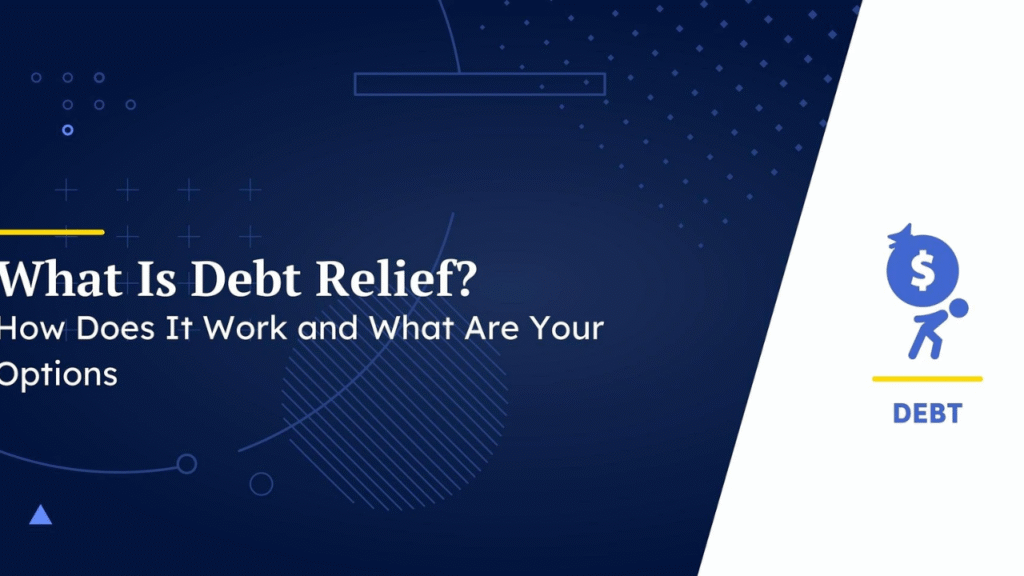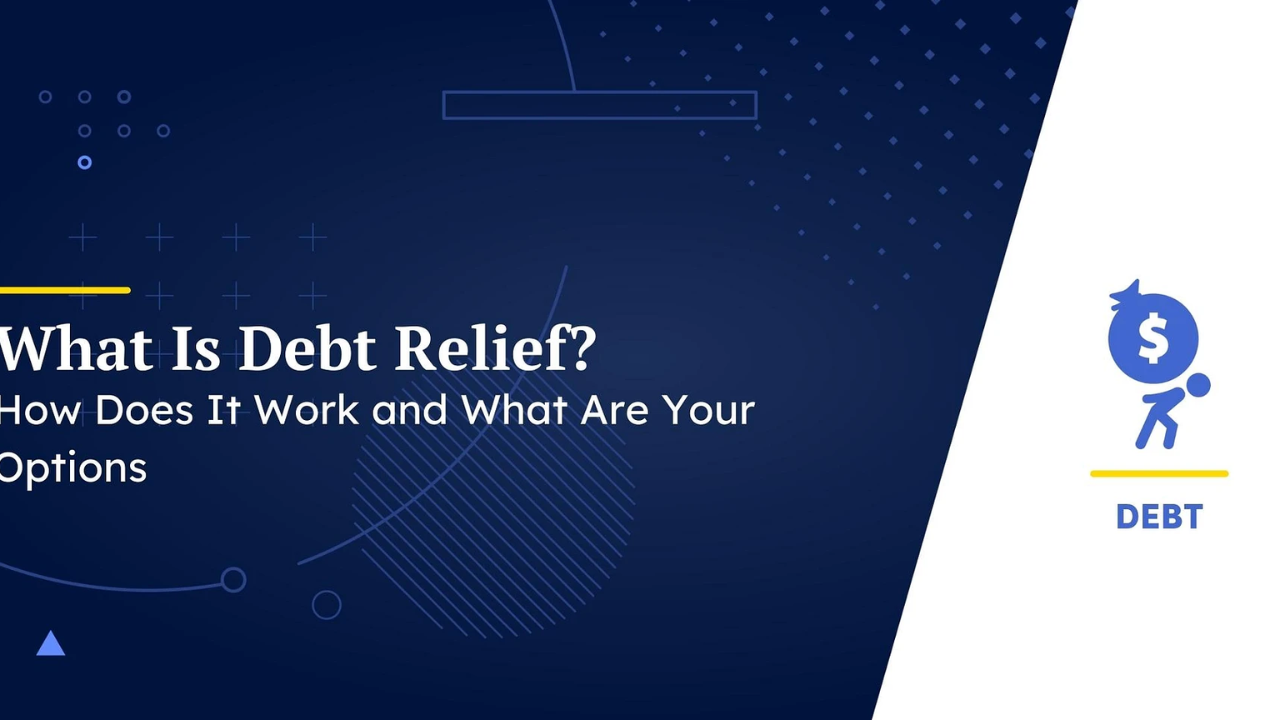
If you’re overwhelmed with mounting bills and calls from creditors, the idea of debt relief may sound like a lifeline. But with so many scams and misleading promises out there, it’s crucial to understand what legitimate debt relief truly means—and how it actually works. In this article, we’ll break down the legitimate debt relief process, types of debt relief programs, warning signs of scams, and how to choose a trusted provider.
What Is Legitimate Debt Relief?
Legitimate debt relief refers to legally recognized and regulated programs designed to help individuals reduce, restructure, or eliminate their unsecured debts (like credit cards, personal loans, and medical bills) through fair and transparent means. These services are typically offered by licensed debt relief companies, non-profit credit counseling agencies, or bankruptcy attorneys, all following federal and state laws.
The goal of legitimate debt relief is to provide a structured path to financial stability without resorting to illegal or unethical practices.
Types of Legitimate Debt Relief Programs
There are several types of debt relief strategies. The right one depends on your financial situation, total debt amount, income, and long-term goals.
1. Debt Consolidation
Combining multiple debts into a single loan with a lower interest rate. This simplifies payments and can reduce overall interest.
- Best for: People with good credit scores
- Typical providers: Banks, credit unions, online lenders
2. Debt Management Plans (DMPs)
Organized by credit counseling agencies, DMPs involve negotiating lower interest rates and combining payments into a single monthly amount.
- Best for: Credit card debt
- Typical providers: Non-profit credit counseling agencies
3. Debt Settlement
A company negotiates with creditors to reduce the total amount owed. You then pay a lump sum or structured payments to settle your debts.
- Best for: Severe financial hardship
- Typical providers: Debt settlement firms (must be transparent and compliant)
4. Bankruptcy
Legal process that can eliminate most unsecured debts. Chapter 7 and Chapter 13 are most common for individuals.
- Best for: When all other options have failed
- Typical providers: Bankruptcy attorneys
How Does Legitimate Debt Relief Work?
Here’s a step-by-step outline of how the process generally unfolds:
- Assessment of Financial Health
A professional evaluates your income, expenses, and debt load to recommend a suitable relief option. - Selection of Relief Method
Based on the evaluation, you may be directed toward consolidation, management, settlement, or bankruptcy. - Enrollment & Creditor Communication
The provider contacts your creditors, negotiating new terms or settlements. - Structured Payments
You make regular payments (either to the provider or a new loan), which are then distributed to creditors. - Debt Resolution
Once terms are fulfilled, your debts are either reduced or fully resolved, and you can begin rebuilding credit.
Key Indicators of Legitimate Debt Relief
To avoid scams and fraud, look for these signs of a legitimate debt relief organization:
| Criteria | Legitimate Provider |
|---|---|
| Upfront Fees | No upfront fees before services |
| Accreditation | Accredited by NFCC, FCAA, or BBB |
| Transparency | Clear terms, costs, and timelines |
| Licensed | Registered with state or federal bodies |
| No Promises | Doesn’t guarantee specific outcomes |
| Reviews | Positive client feedback, no lawsuits |
Overview Table: Comparing Debt Relief Options
| Debt Relief Type | Who It’s For | Pros | Cons | Time Frame | Credit Impact |
|---|---|---|---|---|---|
| Debt Consolidation | Good credit holders | Lower interest, single payment | Needs good credit | 1–5 years | Mild, may improve |
| Debt Management Plan | High-interest debt | Lower interest, guidance | Monthly fee, credit frozen | 3–5 years | Slight short-term dip |
| Debt Settlement | Severe hardship cases | Reduces principal owed | Major credit hit, tax consequences | 2–4 years | Significant drop |
| Bankruptcy (Chapter 7) | Insolvency | Full debt discharge | Long-term credit impact | ~6 months | Severe, lasts 7–10 yrs |
| Bankruptcy (Chapter 13) | Income-based repayment | Keeps assets, partial debt relief | Long payment plan | 3–5 years | Long-term damage |
Red Flags of Debt Relief Scams
- Promises to erase debt immediately
- Requests for upfront payment
- No physical address or contact info
- Pressures you to act urgently
- Asks for personal bank or SSN details early
Legitimate companies abide by the Federal Trade Commission (FTC) rules and never demand payment before rendering services.
How to Choose a Trustworthy Debt Relief Provider
- Check Certifications
Ensure the company is certified by reputable organizations like the National Foundation for Credit Counseling (NFCC) or the Financial Counseling Association of America (FCAA). - Read Reviews and Complaints
Visit the Better Business Bureau (BBB) and Consumer Financial Protection Bureau (CFPB) for client feedback and legal actions. - Get Everything in Writing
A legitimate provider will always provide a detailed contract or proposal before asking for a signature or payment. - Compare Multiple Providers
Don’t settle on the first provider. Consult a few and compare their offers and fees.
Final Thoughts
Legitimate debt relief isn’t a quick fix—but it can be a real path to financial freedom if used wisely. Whether it’s consolidating loans, entering a debt management plan, or filing for bankruptcy, understanding your options—and recognizing legitimate providers—is the first step toward taking control of your financial future.
3 Best One-Line FAQs
Q: Is debt relief bad for your credit?
A: Some methods, like settlement or bankruptcy, can hurt your credit, but others like consolidation may help it.
Q: Can I get debt relief without paying upfront fees?
A: Yes, legitimate companies never charge fees before delivering services.
Q: What’s the safest way to find a debt relief provider?
A: Look for NFCC or FCAA accreditation and read verified customer reviews.

